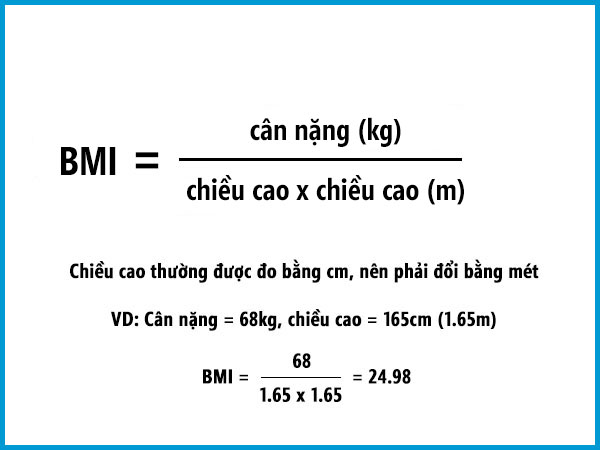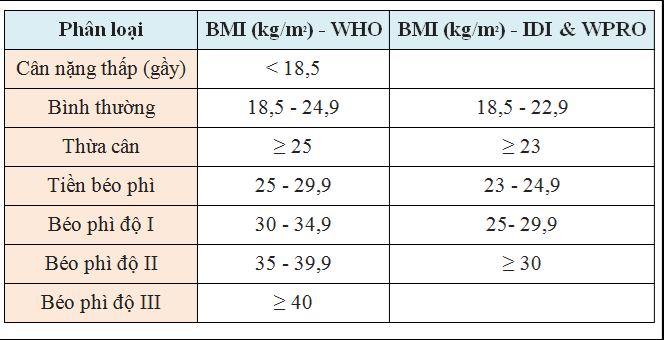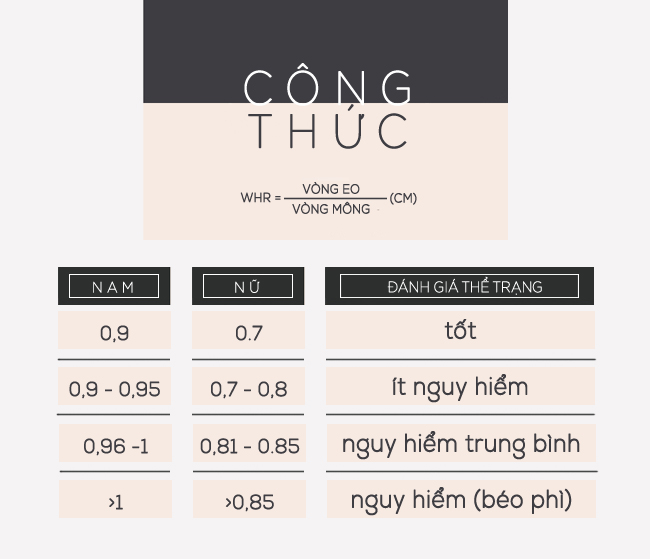What is BMI?
BMI stands for Body Mass Index, which is a commonly-used method recommended by the World Health Organization to determine whether a person is overweight, underweight, or has an ideal weight.

Body Mass Index Formula
Calculation Formula

Classification Table of Overweight and Underweight Based on BMI
Below is a table that classifies the levels of thinness or obesity based on BMI. The classification scale of the World Health Organization (WHO) for Europeans and the classification scale of the International Diabetes Institute & WPRO applied to Asians.

Based on the IDI & WPRO classification scale, the ideal BMI for Vietnamese people is between 18.5 and 22.9. Additionally, you can calculate your ideal weight based on your height:
- Ideal weight = The odd number of height (in cm) multiplied by 9 and then divided by 10.
- Maximum weight = The odd number of height (in cm).
- Minimum weight = The odd number of height (in cm) multiplied by 8 and then divided by 10.
Therefore, based on your height, you can determine the maximum weight allowed. If you exceed the maximum weight, it means you are overweight.
Waist-to-Hip Ratio (WHR) Calculation Formula

The ideal WHR for men should be 0.95 or below, and for women, it should be 0.85 or below.
WHR is a useful tool that supports BMI and indicates the distribution of fat on the body. If fat is concentrated in the abdomen and waist, there is a high risk of developing serious diseases such as diabetes, lipid disorders, atherosclerosis, etc.

Therefore, being too fat or too thin both have a negative impact on health. It is important to regularly monitor your height and weight to make timely adjustments for a healthier body.
Above is the information about how to measure and calculate BMI according to the instructions of the National Institute of Nutrition. If you have any questions, please leave your information below the article.






































